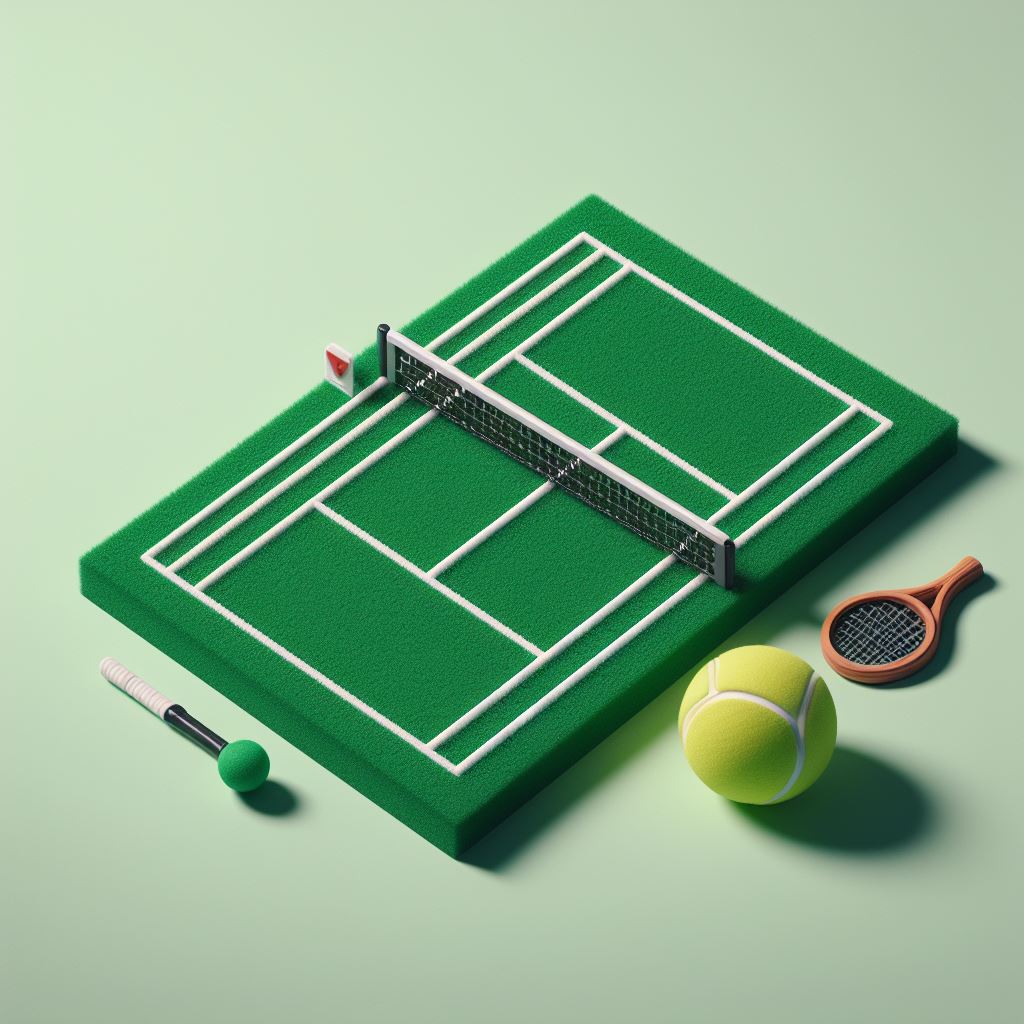Are you interested in learning the fundamentals of tennis but find the rules and techniques overwhelming? Look no further! In this article, we present ‘Simplified! Tennis Basics for Easy Learning’.
Whether you’re a beginner or looking to brush up on your skills, we will break down the equipment needed, explain the tennis court layout, teach you the essential strokes, clarify the rules and scoring, and offer tips to improve your game.
Get ready to ace your tennis journey!
Key Takeaways
- Equipment needed for tennis includes a tennis racket, tennis balls, a tennis bag, tennis shoes, and tennis attire.
- Understanding the tennis court involves knowing its dimensions, sections, and the different types of courts.
- Mastering the basic tennis strokes, such as the forehand, backhand, serve, volley, and overhead smash, is crucial for success in the game.
- Familiarizing oneself with the rules and scoring in tennis, as well as the importance of footwork and footwork drills, can greatly improve one’s game.
Equipment Needed for Tennis
To play tennis, you will need specific equipment. The most important piece of equipment is a tennis racket. When choosing the right tennis racket, there are several factors to consider. First, you need to determine your playing style and skill level. If you are a beginner, it is recommended to start with a lightweight racket that offers more control. As you progress, you can consider a slightly heavier racket that provides more power. Additionally, the grip size of the racket is important. It should feel comfortable in your hand and allow for a secure grip.
In addition to a tennis racket, there are several other essential tennis accessories. One of these is tennis balls. It is important to have a good supply of tennis balls, as they tend to wear out over time. It is also recommended to have a tennis bag to carry your equipment and keep it organized. A bag with compartments for your racket, balls, and other accessories will make it easier for you to transport everything to and from the tennis court.
Understanding the tennis court is crucial to your success in the game.
Understanding the Tennis Court
Understanding the layout and dimensions of the tennis court is essential for players of all skill levels. Tennis courts are rectangular in shape, measuring 78 feet long and 36 feet wide for singles matches, and 78 feet long and 27 feet wide for doubles matches. The court is divided into two equal halves by a net, with each half further divided into three sections: the service boxes, the alleys, and the baseline.
Different types of tennis courts can affect the game’s dynamics and style of play. The most common type is the hard court, which is made of concrete or asphalt and provides a fast and predictable bounce. Clay courts, on the other hand, are made of crushed brick or stone and offer a slower pace with higher bounces. Grass courts, typically used in professional tournaments like Wimbledon, have a fast surface and low, skidding bounces.
Understanding the dimensions and characteristics of different tennis courts can help players adapt their strategies and playing styles accordingly. It is important to note that the dimensions and surface types may vary slightly between different venues and tournaments. Familiarizing oneself with the specific court conditions before a match can give players a competitive edge.
Ultimately, mastering the nuances of the tennis court is crucial for individuals looking to improve their game and achieve success on the court.
Mastering the Basic Tennis Strokes
- There are five basic tennis strokes that every player should master: the forehand, backhand, serve, volley, and overhead smash. These strokes form the foundation of a player’s game and are essential for success on the tennis court.
To execute these strokes effectively, it is important to learn and practice proper grip techniques. The grip can vary depending on the stroke, but the two most commonly used grips are the Eastern grip, which is ideal for forehand and backhand shots, and the Continental grip, which is used for volleys and overhead smashes. Mastering the correct grip will allow for better control and power in your shots.
In addition to grip techniques, footwork and positioning are crucial aspects of mastering the basic tennis strokes. Proper footwork enables players to move quickly and efficiently around the court, allowing them to reach the ball in time and maintain balance during shots. Positioning yourself correctly on the court ensures that you are in the best possible position to execute the stroke effectively.
Rules and Scoring in Tennis
Now let’s delve into the rules and scoring of tennis, a fundamental aspect of the sport that complements the mastery of basic strokes. Understanding these rules and scoring systems is essential for any tennis player, whether you are a beginner or a seasoned pro. Here are some key points to keep in mind:
- Different types of tennis tournaments:
- Grand Slam tournaments: These are the four most prestigious tournaments in tennis – the Australian Open, French Open, Wimbledon, and US Open. They attract the world’s top players and offer the most ranking points.
- ATP and WTA Tour events: These tournaments are organized by the Association of Tennis Professionals (ATP) for men and the Women’s Tennis Association (WTA) for women. They are divided into different categories, from Masters 1000 to International events, based on their importance and prize money.
- Challenger and Futures tournaments: These tournaments provide opportunities for up-and-coming players to earn ranking points and gain experience on the professional circuit.
- Importance of footwork in tennis:
- Good footwork is essential for success in tennis. It allows players to move quickly and efficiently around the court, enabling them to reach and hit the ball effectively.
- Proper footwork helps players maintain balance and stability, which is crucial for generating power and accuracy in their shots.
- Footwork drills and exercises can improve agility, speed, and coordination, helping players to anticipate their opponent’s shots and react quickly.
Tips for Improving Your Tennis Game
To enhance your tennis skills, it is important to implement effective strategies for improving your game. Tennis is not just about physical strength and agility; it also requires mental preparation and a strategic approach. Here are some tips to help you take your tennis game to the next level.
Firstly, develop a strong foundation by mastering the basic techniques of tennis. Focus on your footwork, grip, and swing technique, as these are essential for executing shots accurately. Practice regularly to refine your skills and build muscle memory.
Secondly, work on your tennis strategies. Learn to read your opponent’s game and anticipate their shots. Develop a variety of shots, including serves, volleys, and groundstrokes, to keep your opponent guessing. Use tactics such as changing the pace, angles, and depth of your shots to gain an advantage.
Lastly, mental preparation is crucial for success in tennis. Stay focused and positive throughout the match, regardless of the score. Visualize your shots and imagine yourself executing them perfectly. Practice mindfulness techniques to stay calm under pressure and make better decisions on the court.
Frequently Asked Questions
What Are the Different Types of Tennis Balls and Their Specific Uses?
Different types of tennis balls are designed for specific uses. It is important to choose the right ball for your skill level and playing style. Consider the court surface, as different balls perform better on different surfaces.
How Can I Prevent Tennis Elbow and Other Common Tennis Injuries?
Preventing tennis injuries, including tennis elbow, is crucial for players. Proper warm-up, stretching, and strengthening exercises can help. Using proper technique, equipment, and taking breaks can also reduce the risk of injuries.
Are There Any Specific Strategies or Tactics That Can Help Me Win More Matches?
There are several strategies for mental preparation and techniques for improving shot placement that can help players win more matches. These include visualization, focus, shot selection, and practicing with purpose.
What Are the Different Types of Tennis Grips and When Should I Use Each One?
There are various types of tennis grips that players can utilize depending on the situation. Understanding when to use each grip and how to switch between them is crucial. Common mistakes in grip technique and maintaining proper grip pressure should also be avoided.
How Can I Improve My Footwork and Agility on the Tennis Court?
Improving footwork and agility on the tennis court requires a combination of specific drills and training. Incorporating footwork drills that focus on speed, coordination, and lateral movement can enhance your on-court performance. Agility training exercises, such as ladder drills and cone drills, can also help improve your reaction time and overall agility.
Conclusion
In conclusion, mastering the basics of tennis is essential for anyone looking to improve their game.
By understanding the equipment needed, the layout of the tennis court, and the fundamental strokes, players can develop a solid foundation.
Additionally, learning the rules and scoring system will help players navigate the game effectively.
By following these tips and continuously practicing, players can enhance their skills and enjoy the game of tennis to its fullest potential.








No Comment! Be the first one.